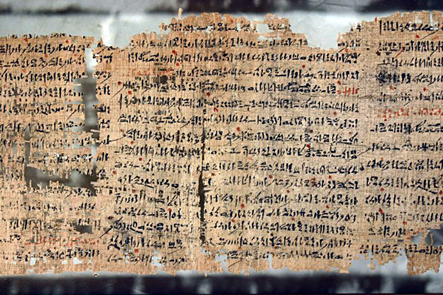Two more days of working in the museum. We have been able to finish checking the description of the ‘Tano’ chariot – our part of the work is nearly done but the conservation and consolidation will continue for some time to come.
The EMCP includes the study of other chariot leather; some objects from the tomb of Tuthmosis IV remains to be studied as well as the finds from Maiherpri. Thursday 22 March we started working on the leatherwork from the tomb of Amenhotep II, discovered in 1898 by Victor Loret. This material, including parts of (a)bow case(s), is important for various reasons, among which is the elaborate decoration (seemingly much more elaborate than the leatherwork from Amarna and the tombs of Amenhotep III and Tutmosis IV) as well as the extensive use of glue.

